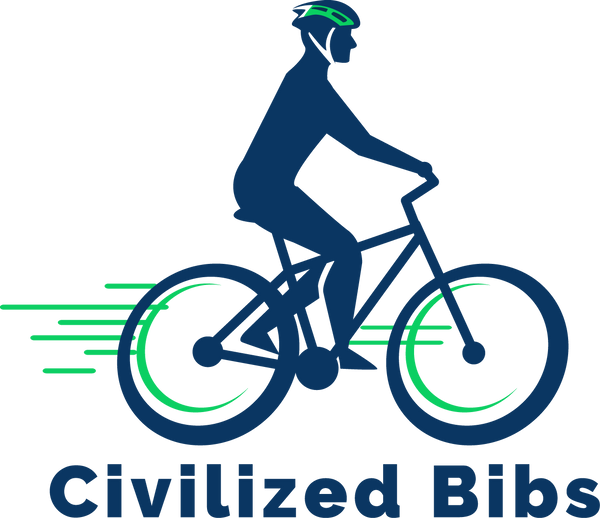Bike Tire Pressure Made Simple: A Beginner's Guide to Better Cycling
Ever finish a ride feeling unnecessarily beaten up? Your tire pressure might be the hidden culprit. Proper tire pressure is the foundation of a comfortable, efficient ride.
Don't worry if you're new to this - we'll start with the basics and build from there. Let's unlock the secrets of perfect tire pressure to elevate your cycling comfort to the next level.
Bike Tire Pressure Basics
Let's start with the fundamentals. Bicycle tire pressure is measured in PSI (Pounds per Square Inch) - think of it like the air pressure in a balloon. The right pressure will keep your tires firm enough to roll smoothly but soft enough to absorb bumps along the way.
First: Find Your Tire Size
Look at the side of your tire - you'll see numbers like "700x25c" or "23mm". The second number (25 or 23) is your tire width, which we'll use to determine your ideal pressure.
Why Pressure Matters
- Too soft (low pressure): Tire feels squishy when you press it, bike feels sluggish, and you risk damaging your rims on bumps
- Too hard (high pressure): Tire feels rock solid, every bump jolts your body, and you have less grip on the road
- Just right: Tire has a little give when pressed firmly, rides smoothly, and absorbs road vibrations
Finding Your Numbers
Let's make this simple. Start with these basic numbers based on your tire width:
Starting Points
- Skinny tires (23-25mm): Start at 90 PSI if you weigh around 150 pounds
- Medium tires (28-32mm): Start at 70 PSI if you weigh around 150 pounds
- Wider tires (35mm+): Start at 40 PSI for mixed terrain
Personal Adjustments
These simple adjustments make those numbers work for you:
- If you're heavier: Add 5 PSI for every 20 pounds above 150
- If you're lighter: Subtract 5 PSI for every 20 pounds below 150
- Safety check: Look at your tire's sidewall for "Max PSI" - never go above this number
How to Check Your Pressure
Basic Method
- Find the valve on your tire (the small metal stem)
- Unscrew the small cap (don't lose it!)
- Press your pressure gauge firmly onto the valve - you'll hear a small hiss
- Read the number on your gauge
- Replace the valve cap
When to Check
- Minimum: Once a week
- Ideal: Before each ride
- Must-check times: After your bike's been sitting for a few days or when the weather changes significantly
When to Adjust Pressure
Weather Changes
- Cold weather: Add 2-3 PSI (cold air decreases pressure)
- Hot weather: Check pressure before early morning rides (heat increases pressure)
- Wet roads: Lower pressure by 5 PSI for better grip
Different Surfaces
- Smooth roads: Use your normal pressure
- Rough roads: Lower by 5-10 PSI for more comfort
- Gravel/dirt: Lower by 10-15 PSI for better control
Essential Tools
You only need a few basic tools to maintain proper tire pressure:
- Floor pump with gauge: Your main tool for adding air. Look for one with a clear pressure gauge that's easy to read ($30-50)
- Portable pump: A small pump to carry on rides in case you need air away from home ($15-30)
- Pressure gauge: Optional but helpful for double-checking your pump's accuracy ($10-20)
Solving Common Problems
Common Issues
- Bike feels bouncy: Your pressure is too high - try reducing by 5 PSI
- Bike feels sluggish: Your pressure is too low - add 5 PSI
- Getting frequent flats: You might need more pressure or there could be damage to your tire - have your local bike shop check it out
Next Steps
Getting your tire pressure right is one of the easiest ways to improve your riding comfort. Remember: it's better to start with slightly lower pressure and adjust up if needed.
Keep experimenting until you find that sweet spot where comfort meets performance. And don't forget – great tire pressure works even better with comfortable cycling gear. Your whole bike setup should work together to give you the smoothest ride possible.
Proper tire pressure pairs perfectly with the right cycling gear. Check out our premium cycling bibs, designed to complement your perfectly-tuned tire pressure.
Share
More Articles
2025 San Francisco Bay Area Cycling Events
2025 promises to be an exceptional year for San Francisco Bay Area cyclists. We've curated a comprehensive guide to the best upcoming cycling events in the Bay.
2025 San Diego Cycling Events
2025 promises to be an exceptional year for San Diego cyclists. We've curated a comprehensive guide to the most exciting upcoming cycling events in the area.
2025 Cycling Events in Los Angeles
Check out Los Angeles's comprehensive 2025 cycling events calendar. Find regular rides and upcoming 2025 events here.
